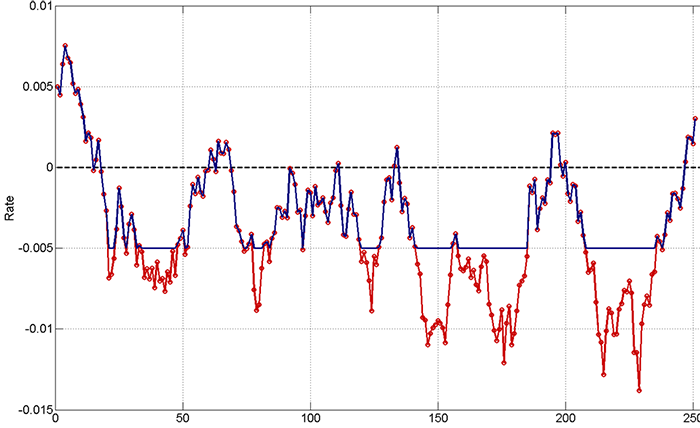
Life with negative interest rates is nothing new. In fact, negative rates have been around for many years. But things didn’t get serious until 2014 when the European Central Bank (ECB) set the Deposit Facility Rate (DFR) below zero. This was the first time negative rates had been used as a direct measure to stimulate the economy, and the first time they had directly affected the Euro. Fast forward to March 2015, and a significant portion of Euro zone government debt had negative yields. Today, rates are moving up, but negative rates haven’t disappeared.
Negative interest rates continue to present challenges - specifically pricing and managing risk of rates derivatives and bonds with models that assume non-negative rate dynamics can be difficult. For this reason, today’s blog post will point you to our most popular and helpful resources that give practical tips on overcoming the common challenges of modeling negative rates.
1. Best Practices for Mastering Negative Rates
Europe’s great negative interest rate monetary policy experiment has caused some stormy weather over the past few years. Both small shops and large institutions alike have spent a lot of money and effort updating, fixing, and re-engineering libraries, spreadsheets, and systems to cope with the change. But it needn’t be this difficult. In this on-demand webinar, experts discuss the context for negative rates and the best approaches to modeling them, including: building curves and model requirements for negative rates, modeling vanilla swaptions and modeling rates exotics. Learn more by viewing the on-demand webinar.
2. Mastering Negative Rates eBook
The dip into rates less than zero has meant that the process of pricing and risk managing derivatives and bonds has become more complex. This is namely because most firms’ models and systems have been designed to assume non-negative rate dynamics. In this eBook, we will explore some of the specific risk management issues brought about by negative interest rates and offer proven tactics for overcoming them. Learn more.
3. Managing Swaptions in the Face of Negative Rates
Negative interest rates were originally intended to be only a temporary measure for accelerating the economy. However, we are now a few years into this experimental monetary policy, which shows no signs of ending. In this post, FINCAD’s Russell Goyder, PhD, gives five reasons why Shifted SABR has emerged as the market standard for modeling swaptions impacted by negative interest rates. Goyder explains how shifted SABR helps market practitioners model the volatility cube and capture the smile dynamics—providing the ability to accurately price and hedge derivatives. Learn more.
4. Negative Rates: Live Q&A
This interactive event was aimed at helping answer market participants’ most pressing questions around negative rates. The panelists, including John Hull, PhD, Russell Goyder, PhD, Director of Quantitative Research and Development at FINCAD, and Mark Gibbs, PhD, Chief Software Architect at FINCAD, took questions from the audience. When it comes to the valuation of swaptions with consideration to negative rates, what is the best model to use? And why is that lower or negative rates, which have been intended to stimulate growth, have not done so in regions like Europe and Japan? Get answers to these questions and more by viewing the on-demand webinar, and/or checking out the blog post summary.
5. 3 Best Practices for Thriving in a Negative Rates Environment
If a firm’s underlying calculations work for negative rates, then how do problems arise? Often the culprit is poor quality diagnostics. If diagnostics are limited, then it’s easy to become overly energetic in your attempt to validate input up-front.
In general, determining whether a set of inputs will work in a given calculation is at least as hard as solving the calculation problem in the first place. As such, we need another approach – validate inputs where possible, and where not, use strong contextual diagnostics available in a robust analytics system. In this popular blog post, we discuss the need for strong diagnostics and two more useful best practices that will help you overcome the complexity of doing business in a negative rates environment.
Be sure to check back with our blog regularly where we will continue to post useful articles around negative interest rates and other timely valuation and risk topics.
